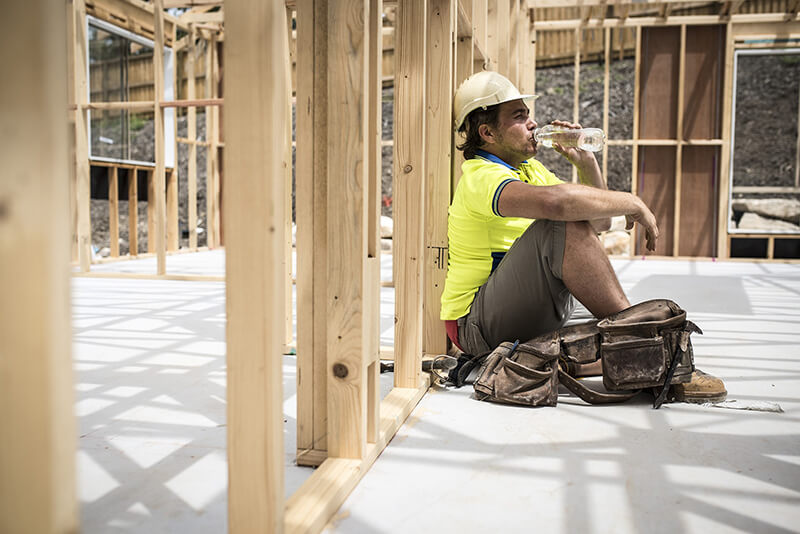What Are The Structural Safety Measures Taken In High-rise Architectural Projects?

A construction site is a dangerous place where workers are exposed to many risks during the course of work. With more than 1,000 fatalities and countless injuries each year, it is of utmost importance to follow all necessary safety measures to minimize accidents and save lives. The structural features of a construction site represent an essential component of worker safety. This article will explore everything you need to know about structural features installation safety in construction.
Protective Systems
Protective systems are designed to safeguard workers against potential accidents, injuries, and fatalities. They include:
- Guardrails: Guardrails are essential for preventing falls from elevated structures. Properly installed guardrails follow specific requirements, including having a minimum height of 42 inches and a top rail that can withstand at least 200 pounds of force.
- Toeboards: Toeboards are installed to protect workers from falling objects. Typically, they need to be at least four inches high.
- Slip-resistant surfaces: Slip-resistant surfaces can help prevent falls and slips on construction sites. They are a must-have for elevated surfaces, such as scaffolds and bridges.
Scaffolds
Scaffolds are temporary structures that are used to support workers and materials during construction work. Scaffolds must be properly designed, erected, and maintained to prevent accidents. Some safety guidelines for working on scaffolds include:
- Never exceed the scaffold’s load capacity.
- Ensure that the scaffold is leveled and supported adequately to prevent it from tipping over.
- Use personal protective equipment (PPE), such as hard hats and harnesses.
- Ensure that platforms are sturdy and level to prevent tripping and falling.
Stairways and Ladders
Stairways and ladders are critical components of worker safety in the construction industry. Properly installed and maintained stairways and ladders can prevent falls and serious injuries. Here are some safety guidelines for working on ladders and stairs:
- Use a ladder that is the appropriate height for the job.
- Ensure that the ladder is in good condition and not damaged.
- Never use a damaged ladder.
- Position the ladder on a level surface to avoid tipping over.
- Use a three-point contact system when climbing the ladder, meaning two feet and one hand or two hands and one foot should always be in contact with the ladder.
- Stairways should be well lit and free of debris and clutter to prevent tripping and falling.
Electrical Safety
Electrical safety is paramount in construction sites. Improperly installed or handled electrical wiring and equipment can lead to electric shocks, electrocutions, and fires. Here are safety guidelines to follow:
- Never touch any exposed electrical wires or equipment.
- Ensure that all electrical wires and equipment are properly grounded.
- Use only approved electrical equipment.
- Never attempt to repair electrical equipment unless you are a qualified electrician.
- Immediately report any electrical hazards or malfunctions to a supervisor or safety manager.
Fire Safety
Fire safety is crucial in construction sites, which are often filled with flammable materials and equipment. Proper fire safety measures can minimize the risk of fire and protect workers and property. Here are some safety guidelines for fire safety:
- Have an emergency evacuation plan in place.
- Ensure that there are fire extinguishers available on site and that workers are trained on how to use them.
- Never smoke near flammable materials or in a confined space.
- Regularly inspect electrical wiring and equipment to detect potential hazards.
Noise Safety
Noise safety is an often overlooked aspect of construction safety. Many construction sites are operated with loud machinery and equipment that can cause hearing damage over time. Here are some safety guidelines for noise safety:
- Wear appropriate ear protection, such as earplugs or earmuffs, when operating loud machinery or equipment.
- Reduce noise levels by installing sound barriers around machinery or equipment.
- Rotate workers between noisy and quieter areas to minimize noise exposure.
Hazard Communication
Hazard communication is essential for ensuring that workers are aware of potential hazards and risks on a construction site. All construction sites should have a clear and concise hazard communication plan in place to protect workers and lessen the risk of accidents.
- Ensure that workers are trained on hazard communication protocols and understand how to access hazard information.
- Provide clear and concise signage that identifies potential hazards and risks on the construction site.
- Regularly communicate with workers about potential hazards and how to mitigate them.
Conclusion
Construction sites are inherently dangerous, but by following proper safety measures, we can minimize the risk of accidents and protect workers' lives. It takes a team effort to ensure that construction work is done safely, and everyone, from managers to laborers, must do their part to create a safe working environment. By following structural features installation safety guidelines, we can ensure that everyone on the construction site remains safe and healthy.




Post a Comment for "What Are The Structural Safety Measures Taken In High-rise Architectural Projects?"